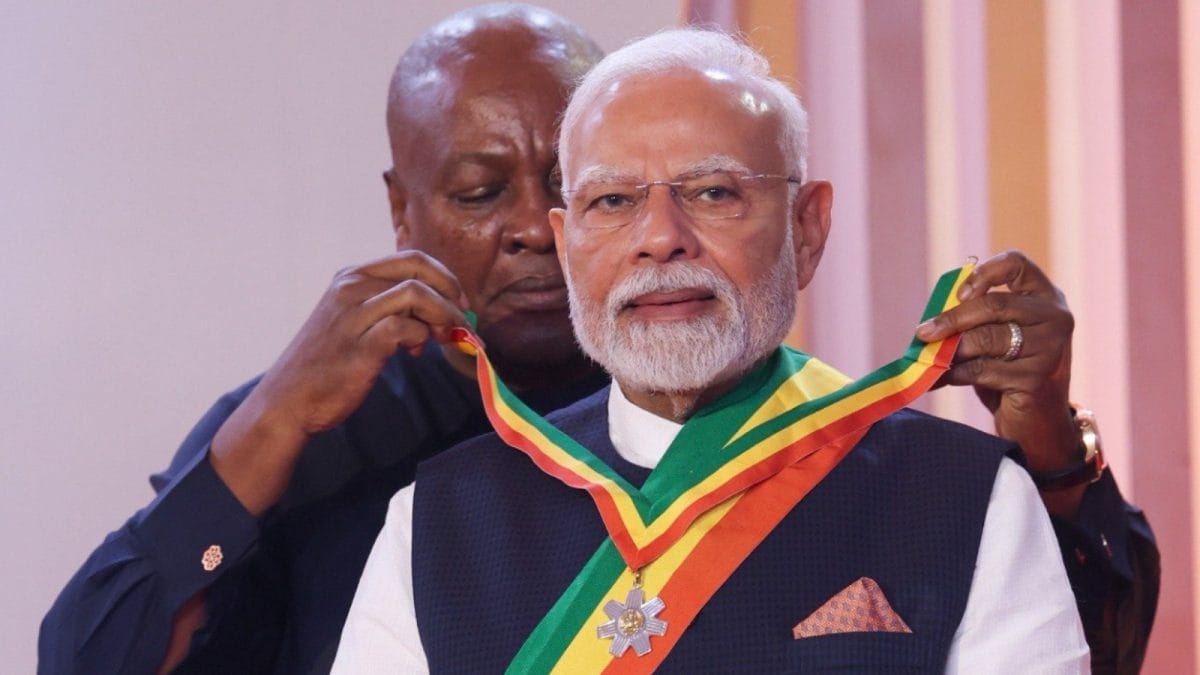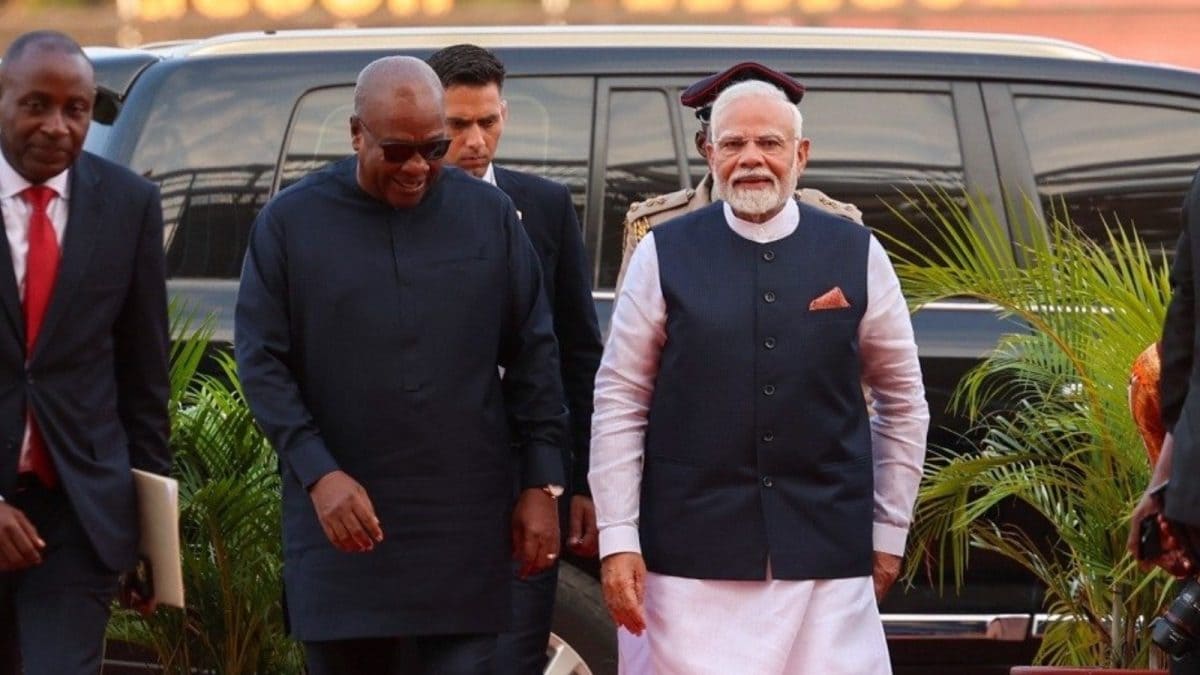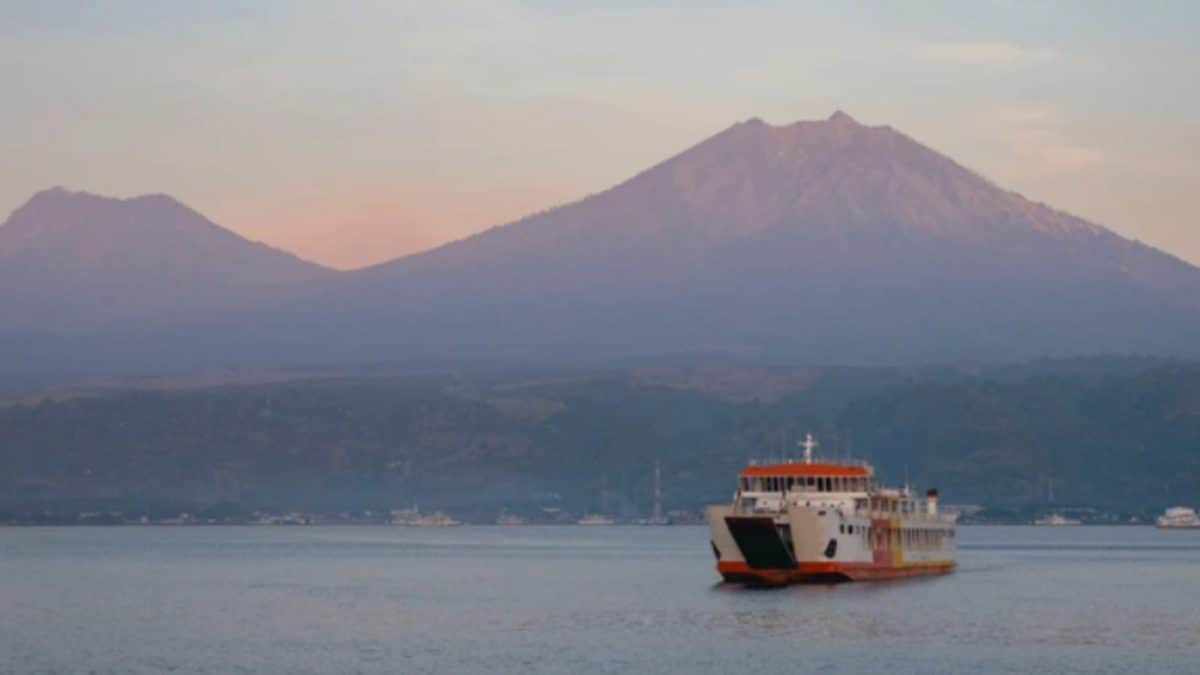Last Updated:July 02, 2025, 12:34 IST
The Dalai Lama today reaffirmed that only the Gaden Phodrang Trust can decide his reincarnation, rejecting China’s claim to appoint a successor through state-backed channels

The Gaden Phodrang Foundation, set up by the 14th Dalai Lama in 2015, will head the search and recognition process for his successor. (News18)
As the 14th Dalai Lama turns 90 this week on July 6, the quiet monastery town of Dharamshala is again at the centre of a global debate. The issue this time goes beyond religion; it’s about who gets to decide the spiritual future of Tibet, and more importantly, who gets to control it. At the heart of this succession struggle is the Gaden Phodrang Trust, the only institution authorised by the Dalai Lama to recognise his future reincarnation.
China has made no secret of its intention to identify its own Dalai Lama candidate, using state-controlled religious channels. While it has never appointed a Dalai Lama before, Beijing has repeatedly signalled, particularly through a 2007 regulation, that it intends to name its own successor after the 14th Dalai Lama passes. The Gaden Phodrang, however, asserts exclusive spiritual and historical legitimacy in the succession process.
As both sides prepare to assert their claims, the role of the Gaden Phodrang Trust, and why it remains central to the search for the next Dalai Lama has come into sharp focus.
FROM TEMPORAL POWER TO SPIRITUAL CUSTODIANSHIP
The Gaden Phodrang was originally the name of the government established by the 5th Dalai Lama in the 17th century. It was both the spiritual and temporal authority in Tibet, ruling from the Potala Palace in Lhasa. For centuries, this institution was central to Tibetan governance, combining monastic leadership with political power.
After the Chinese annexation of Tibet in 1950 and the subsequent flight of the 14th Dalai Lama to India in 1959, the Gaden Phodrang was re-established in exile. Over time, its role evolved. In 2011, the Dalai Lama gave up all political authority, passing it to the democratically elected Central Tibetan Administration. The Gaden Phodrang remained his personal spiritual office, which he then formalised as a non-profit trust to carry forward his religious legacy.
Since then, the Gaden Phodrang Trust has served as the spiritual and institutional body overseeing matters relating to the Dalai Lama’s lineage, teachings, and reincarnation.
WHY THE GADEN PHODRANG TRUST HAS THE SOLE MANDATE
The current Dalai Lama has repeatedly emphasised that only the Gaden Phodrang Trust can carry out the process of identifying his successor. This position has been established through decades of spiritual discourse and policy decisions:
As early as 1969, the Dalai Lama publicly stated that whether the institution of the Dalai Lama should continue was for the Tibetan people to decide.In 2011, this was codified in a resolution: when the Dalai Lama turns 90, a decision would be made—if succession were to proceed, the process would be led entirely by the Gaden Phodrang, in consultation with Tibetan Buddhist leaders and spiritual protectors.On Wednesday, days before his 90th birthday, he reaffirmed that no one else, governmental or otherwise, has any authority to interfere in this matter. “I hereby reiterate that the Gaden Phodrang Trust has sole authority to recognise the future reincarnation; no one else has any such authority to interfere in this matter," the Dalai Lama said, clearly drawing the battle lines against Beijing’s ambitions to appoint a China-backed successor.This exclusive mandate derives from religious tradition, the personal authority of the Dalai Lama, and the institutional continuity of Gaden Phodrang’s spiritual role.
THE TRADITIONAL PROCESS OF RECOGNISING A DALAI LAMA
According to Tibetan custom, after a Dalai Lama passes away, senior monks and spiritual advisors consult oracles, observe dreams, and interpret visions. They also look for physical signs and test potential children to see if they recognise sacred items from the previous Dalai Lama’s life.
It was through this process that the current Dalai Lama was discovered in 1939. A two-year-old boy in Amdo, northeastern Tibet, identified objects belonging to the 13th Dalai Lama, and was eventually enthroned in 1940.
This sacred, non-political process is what the Gaden Phodrang Trust now seeks to preserve.
CHINA’S CHALLENGE: GOLDEN URN AND STATE CONTROL
The Chinese government has a different vision. Beijing claims the right to manage all religious affairs within its borders, including reincarnations. It bases its claim on a 1793 Qing Dynasty edict, which introduced the Golden Urn system—a lottery-based method to select reincarnated lamas. Though seldom used historically, China now insists it must be the only method allowed.
In 2007, the Chinese State Administration for Religious Affairs passed a regulation stating that all reincarnations of Tibetan Buddhist leaders must receive state approval. This legal framework effectively blocks any candidate from being recognised in China without Communist Party approval.
The Dalai Lama has explicitly rejected this, stating that his reincarnation will be born in a “free country", outside Chinese jurisdiction.
THE PANCHEN LAMA CONTROVERSY
The Panchen Lama case stands as the clearest precedent for what may unfold again.
The Panchen Lama is traditionally the second-highest spiritual authority in Tibetan Buddhism, often playing a key role in identifying the Dalai Lama’s reincarnation. In 1995, the 14th Dalai Lama identified a six-year-old boy, Gedhun Choekyi Nyima, as the 11th Panchen Lama. Within days, Chinese authorities abducted the boy and his family. He has not been seen since.
In his place, Beijing installed its own Panchen Lama—Gyaincain Norbu—a child loyal to the Party’s religious apparatus. However, the Chinese-appointed figure is widely rejected by the Tibetan exile community and many Buddhists worldwide. He is seen as a political figure lacking spiritual legitimacy.
The controversy continues to cast a long shadow, reinforcing why the Gaden Phodrang Trust is determined to safeguard the traditional, monastic-led process of reincarnation. The fear remains that Beijing will attempt a similar intervention in the case of the Dalai Lama, using state power to impose a successor lacking spiritual legitimacy.
WHY THE TRUST MATTERS TO INDIA AND THE WORLD
The Gaden Phodrang Trust is not just a religious entity; it is based in Dharamshala, India, and symbolises India’s moral and spiritual support for the Tibetan cause.
For India, the Dalai Lama represents more than a refugee; he is a cultural guest, a Nobel laureate, and a symbol of religious freedom. The succession process, therefore, places India in a diplomatically sensitive spot. If the next Dalai Lama is found within India, it may strain ties with China, but refusing to support the Trust’s authority could weaken New Delhi’s moral standing.
Globally, countries like the United States have already legislated support for the Tibetan-led succession process. The Tibetan Policy and Support Act of 2020 authorises sanctions against any Chinese officials who interfere with the Dalai Lama’s reincarnation. The European Parliament and other democratic governments have echoed similar sentiments.
TWO DALAI LAMAS?
All signs point to a likely duality in succession. China is expected to appoint its own Dalai Lama through official state institutions, possibly invoking the Golden Urn—a Qing-era ritual it used in the Panchen Lama case. On the other side, the Gaden Phodrang Trust, following established Tibetan Buddhist procedures, is expected to identify a reincarnation outside Chinese territory, most likely from among exile communities.
This would result in two claimants: one endorsed by the Chinese state and the other recognised by the Tibetan religious hierarchy and the global diaspora.
The world must now prepare for a religious showdown with geopolitical implications. The question is no longer just “who will be the next Dalai Lama?", it is also “whose Dalai Lama will the world accept?"

Karishma Jain, Chief Sub Editor at News18.com, writes and edits opinion pieces on a variety of subjects, including Indian politics and policy, culture and the arts, technology and social change. Follow her @kar...Read More
Karishma Jain, Chief Sub Editor at News18.com, writes and edits opinion pieces on a variety of subjects, including Indian politics and policy, culture and the arts, technology and social change. Follow her @kar...
Read More
News world Will There Be Two Dalai Lamas? Inside The Clash Between China And Gaden Phodrang Trust

 18 hours ago
18 hours ago

















